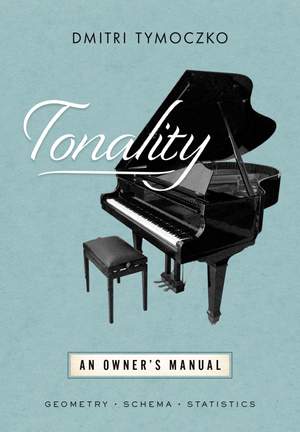Contents
- Preface and Acknowledgements
- 1. Implicit musical knowledge
- 1. Gesualdo's trick
- 2. The quadruple hierarchy
- 3. Philosophy
- 4. Statistics
- 5. Schema
- 6. Outline
- Prelude: transposition along a collection
- 2. Rock logic
- 1. A melodic principle
- 2. A harmonic principle
- 3. A first chord-loop family
- 4. Two more families
- 5. Shepard-tone passacaglias
- 6. Minor triads and other trichords
- 7. A fourth family
- 8. Other modalities
- 9. Function and retrofunction
- 10. Continuity or reinvention?
- Prelude: the Tinctoris transform
- 3. Line and configuration
- 1. The imperfect system
- 2. Voice exchanges
- 3. Other intervals
- 4. The circle of diatonic triads
- 5. Voice exchanges and multiple chord types
- 6. Four-voice triadic counterpoint
- 7. Counterpoint within the chord
- 8. Seventh chords
- 9. Harmony and counterpoint
- Prelude: sequence and function
- 4. Repetition
- 1. Repetition reimagined
- 2. Repeating contrapuntal patterns
- 3. The geometry of two-voice sequences
- 4. Three voices and the circle of triads
- 5. Three voices arranged 2+1
- 6. Four voices
- 7. Contrary-motion sequences
- 8. Melodic sequences and near sequences
- 9. Near sequences
- 10. Sequences as reductional targets
- Prelude: three varieties of analytical reduction
- 5. Nonharmonic tones
- 1. The first practice and the SNAP system
- 2. Schoenberg's critique
- 3. Monteverdi's Ohime
- 4. The standardized second practice
- 5. A loophole
- 6. After nonharmonicity
- Prelude: functional and scale-degree analysis
- 6. The origins of functional harmony
- 1. The logical structure of protofunctionality
- 2. Similarities and differences
- 3. Origin and meaning
- 4. Harmony and polyphony
- 5. The Pope Marcellus Kyrie
- 6. A broader perspective
- 7. I Cannot Follow
- Prelude: could the Martians understand our music?
- 7. Functional progressions
- 1. A theory of harmonic cycles
- 2. A more principled view
- 3. Rameau and Bach
- 4. Functional melody, functional harmony
- 5. Fauxbourdon and linear idioms
- 6. Sequences
- 7. Bach the dualist
- Prelude: chromatic or diatonic?
- 8. Modulation
- 1. Two models of key distance
- 2. Enharmonicism and loops in scale space
- 3. Minor keys
- 4. Modulatory schemas
- 5. Up and down the ladder
- 6. Modal homogenization and scalar voice leading
- 7. Generalized set theory
- Prelude: hearing and hearing-as
- 9. Melodic strategies
- 1. Strategy and reduction
- 2. Two models of the phrase
- 3. Chopin and the Prime Directive
- 4. An expanded vocabulary of melodic templates
- 5. Simple harmonic hierarchy
- 6. The four-part phrase
- 7. Grouping, melody, harmony
- 8. Beyond the phrase: hierarchy at the level of the piece
- Prelude: why Beethoven?
- 10. Beethoven theorist
- 1. Meet the Ludwig
- 2. From schema to flow
- 3. The Tempest
- 4. The Fifth Symphony
- 5. The Pastorale sonata, op. 28
- 6. Schubert's Quartettsatz
- 7. The prelude to Lohengrin
- 11. Conclusion
- 12. Appendix 1: Fundamentals
- 13. Appendix 2: Deriving the spiral diagrams
- 14. Appendix 3: From sequence to transformation
- 15. Appendix 4: Music theory and corpus analysis
- Terms and Abbreviations
- Bibliography



